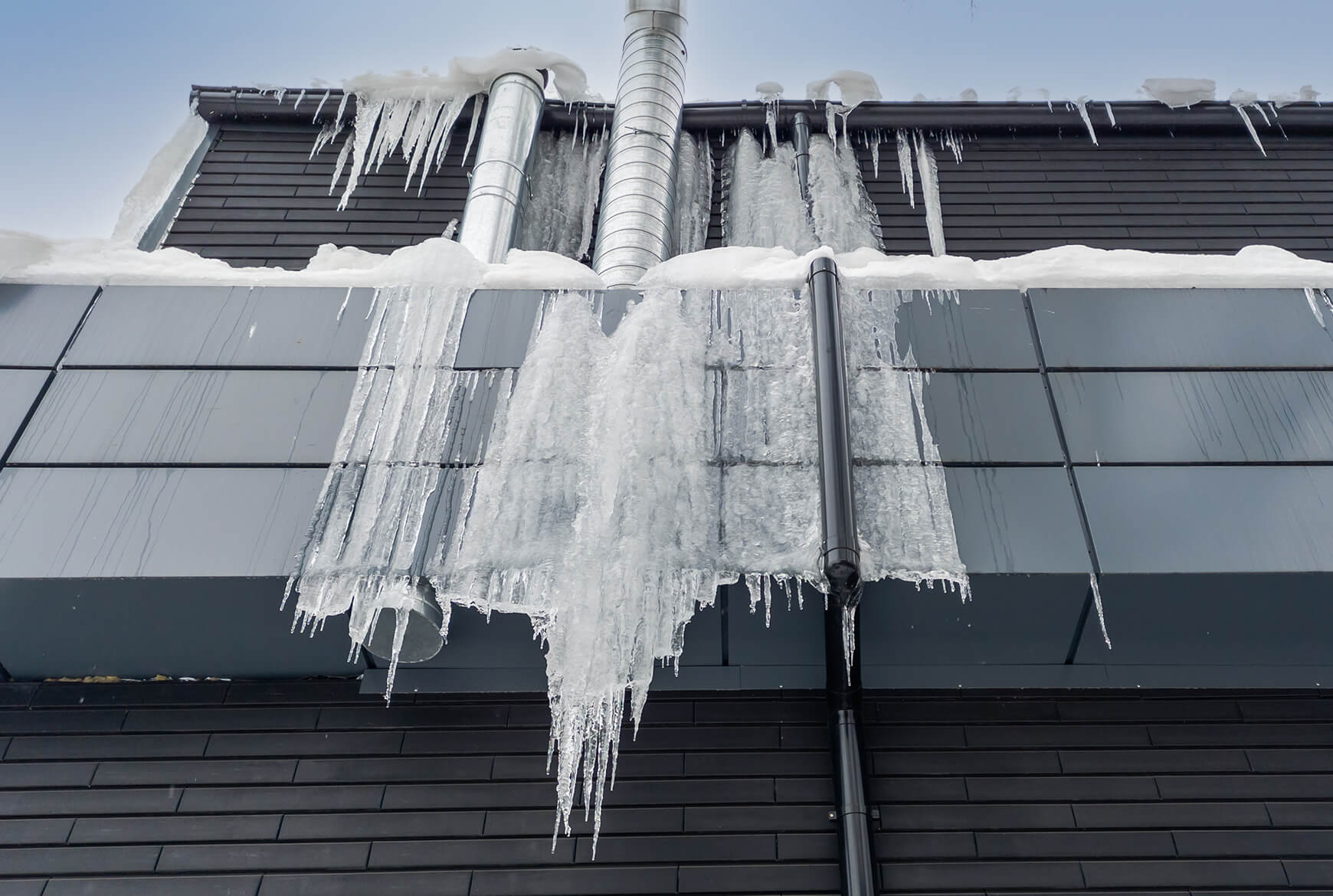This article is intended for information purposes only and should not be construed as professional advice.
Commercial buildings: Water damage prevention

A dishwasher hose bursts in a restaurant next door to your building causing damage on three floors. This means cleaning up the mess, replastering, repainting. “I really don’t need that headache... even with commercial insurance” is what you’re likely thinking to yourself.
The good news is there are precautions you can take to prevent water damage. Read more about it!
Common Causes of Damage and the Impacts
The most frequent culprit of property damage is water. In condo buildings, water leaks are to blame 95% of the time, according to the Insurance Bureau of Canada.
In general, they account for 48% of insurance claims according to the Canadian Institute of Actuaries.
Why so frequent?
There are several reasons for water damage in commercial buildings and condominiums.
Climate change : flooding, freezing rain, extreme weather… phenomena that used to happen every 40 years now happens every six years.
Increased precipitation can lead to more sewers backing up.
A burst pipe can also cause lots of damage.
At times, turning a blind eye can make the situation worse. Don’t look any further than an aging water heater, a poorly sealed window or a leaky toilet...
The key takeaway is that damage is often avoidable : Up to 93% of the cost of water damage is preventable according to the American Insurance Association.
The consequences
Damage will depend on the source, how fast the issue can be detected and fixed as well as the property and equipment affected.
The impacts are especially perverse for condo associations and condo owners. Often, the unit that is the source of the problem has very little damage compared to the neighbouring units. In addition to material losses and the inconvenience of the situation, this can lead to disputes.
The impacts of water seepage or leakage on companies will range from :
- Temporary closing
- Out-of-service equipment
- Lost merchandise, furniture or documents
- Temporary relocation
- Structural integrity issues
- Temporary suspension of regular activities
Some insurers offer business interruption insurance that can cover employee salaries following an unexpected shutdown as a result of water damage.
On average, expenses quickly reach $10,000. In many cases, the insurance coverage will exclude water damage caused by flooding or sewer backup. When a pipe bursts inside the wall, the insurance doesn’t cover the long-term impacts like the appearance of mould.
It is therefore important to know your coverage. As always, prevention is better than simply keeping your fingers crossed!
Risk Management Plan
A risk management plan includes strategies and techniques for identifying and preventing risks, which is essential for the sound management of any company or condo association.
There are many ways to go about preparing one, but the best way to start is by asking yourself these questions :
- What could happen?
- What do we do in the event of a loss?
- What can we do to prevent damage?
- Do we have the money to pay for the damage? Who reimburses what?
Assess the Situation
Make a list of all possible outcomes. If necessary, call a specialized firm for assistance.
Having your entire building inspected, inside and out, remains the best way to identify potential problems. Make sure to look at the roof, windows, plumbing...
While inspecting, the person will look at everything from the slope of the ground to the gutters to make sure that rainwater or melting snow flows away from the building's foundation or a neighbour.
Prepare for the Worst
Refer to the information below and send it to everyone responsible for risk management (a manager, janitor or condo owners). The idea is for everyone to know what to do in the event of water damage.
Preventing Damage
During inspection, you will most likely notice things that need correction or improvement. For example, install a check valve to prevent sewer backflow.
Consider these seasonal precautions too :
- In the spring, remove the ice and snow from the edges of the roof to prevent water seepage.
- Make sure windows and doors are closed during torrential downpours.
- Clean the gutters in the fall and in the spring.
Are you a member of a condo association? Be sure to inform your fellow condo owners to do their part. Prevention is also a matter of due diligence.

Technology at your service
Preventing water damage using technology is an interesting option. One of Beneva’s partners, HydroSolution, offers a water leak prevention and detection solution that is perfect for all risk management plans.
As soon as a leak is detected, the sensor alerts the water alarm controller. It can identify false alarms. In the event of an actual leak, the master valve will close automatically. You then receive a notification.
Another solution is to centralize all the alarms (all rooms or units). This tool (available on smartphone, tablet, etc.) is very practical for those who own several buildings or for condo associations.
Safety First
The next time you see a plumber in the neighbourhood, ask yourself this question : Could that be water damage?
See it as a reminder to check your own installations. The effectiveness of your risk management plan relies on you knowing your situation. Make sure your coverage is adequate and, when in doubt, call your insurer!